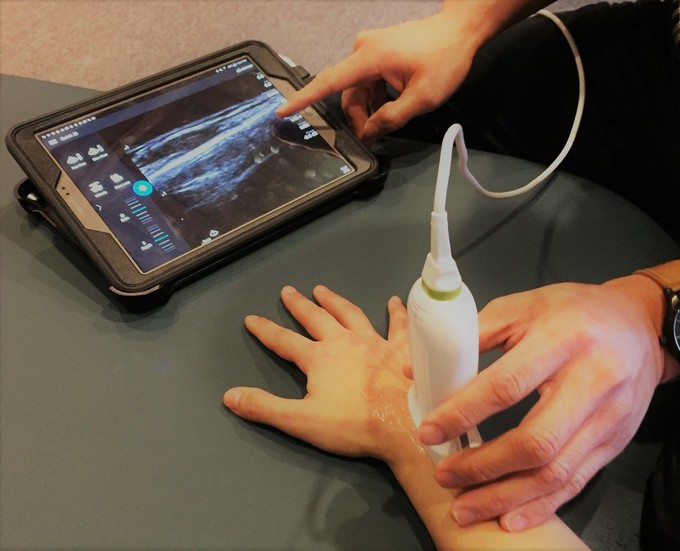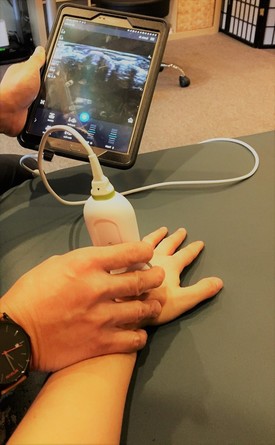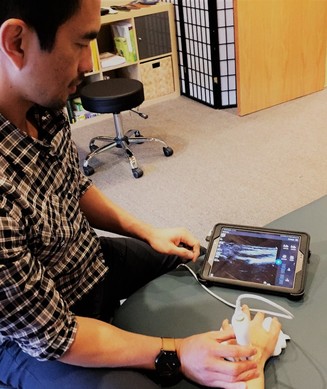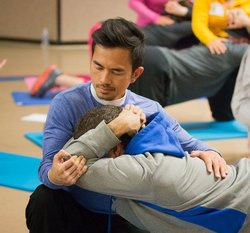What You Need to Know About Diagnostic Musculoskeletal UltrasoundBy Dr Khong Lamvichit on 30 January 2017 What you should know about your Ultrasound Examination Your doctor recommended an ultrasound examination of one or more parts of your musculoskeletal system. You may have heard about diagnostic ultrasound examinations or possibly been examined with ultrasound in the past, but you may still have questions about your examination. To help answer your questions, the American Institute of Ultrasound in Medicine (AIUM) - an organization of doctors, sonographers, and scientists - has prepared a collection of information answering the most commonly asked questions. What is Ultrasound? Ultrasound is ordinary sound with the exception its frequency or pitch, is higher than people can hear. When sent into the body from a handheld device called a transducer, ultrasound travels through tissue and is reflected from internal structures. The reflections, or "echoes," return to the transducer, where they are converted electronically into images. These continuously changing images are displayed on a monitor and may be recorded on an android tablet or cloud space. Is Diagnostic Ultrasound Safe? There are absolutely no known harmful effects associated with the medical use of diagnostic musculoskeletal ultrasound. Although the possibility exists that biological effects may be identified in the future, current information indicates that the benefits to patients far outweigh any potential risks. Why Do I need a Diagnostic Musculoskeletal Ultrasound Examination? Your doctor may recommend a diagnostic musculoskeletal ultrasound examination to look for causes of joint or muscle pain or to evaluate a lump. Are There Any Special Preparations for the Examination? There are no special preparations for a musculoskeletal ultrasound examination. How is a Diagnostic Musculoskeletal Ultrasound Examination Performed? The transducer is placed on the skin surface after a gel is applied to provide better contact. The gel may feel cool and may temporarily stain clothes, so you may want to wear easily washable clothing. A paper or cloth gown will be provided if necessary. The room is usually darkened during the examination so the examiner can see the monitor screen. How Will I feel During the Examination? There is no pain involved in an diagnostic ultrasound examination unless the area being examined is sensitive. When discomfort occurs, it is usually very tolerable. Who Will Perform the Examination? The examination is usually performed by Dr. Khong Lamvichit, another specially trained health care professional called a sonographer, or other doctors trained in sonography. The images obtained from the examination will be interpreted by Dr. Khong Lamvichit or another doctor trained in sonography. This interpretation may not be available immediately after you have your examination. What are the Limitations of This Examination? The quality of a diagnostic ultrasound examination depends on the ultrasound equipment used and the experience and knowledge of the examiner and interpreting doctor. Because bone weakens sound waves, ultrasound is not good for examining bones or deep parts of joints. Dr. Khong Lamvichit has implemented the use of diagnostic musculoskeletal ultrasound in his practice to assist with his assessments and to better diagnose sports injuries. His patients are better served from this method and treatments are more precise for their recovery. In the end of 2016, Dr. Khong Lamvichit paved the way for chiropractic physicians in Illinois to obtain an ultrasound transducer capable of linking to a mobile android device. and became the first chiropractic physician to own the Philips Lumify L12-4 broadband linear array transducer in Chicago, IL. Look to visit: http://www.aium.org/aboutUs/aboutUs.aspx for additional information of Musculoskeletal Diagnostic Ultrasound in Chicago, IL. References: 1. Retrieved January 30, 2017, from http://www.aium.org/ 2. https://www.lumify.philips.com/web/products-accessories
In addition to extensive fitness experience, having trained under reputable sports doctors in his field, Dr. Khong has been a long time Brazilian Jiu Jitsu, Boxing, and Muay Thai practitioner, and currently training independently in gymnastics, yoga, capoeira, and the Ido Portal method. Dr. Khong also works professionally as a presenter and consultant for crossfit and powerlifting gyms throughout the Chicago Land area. Dr. Khong is originally from St. Petersburg, Florida and is a graduate of the Florida Gulf Coast University and National University of Health Sciences. Dr. Khong Lamvichit is a nationally board certified Chiropractic physician in Chicago, Illinois. Do a Marathon not a Sprint
By Dr Khong Lamvichit 11 January 2017
Wondering when you could lose the added poundage from your bingeful post-holiday eats? Well here's the magic answer; there is no magic answer. No diet pill, prayer, or the latest in shake weight technology will flip the added mass you accumulated in a span of 1.5 months, nope but flat out hard work and endurance. Not even necessarily about hard work, but endurance and here's why:
Short goals 4-6 weeks: "Revenge Fitness" or should I go with "Extreme Fitness"? Doesn't matter, all falls under the category of Short Term Fitness goals. Seeing is believing and I see little gains from the erratic gym goers. I get it the significant other found someone else, beach-time is a coming, or maybe the combination of both, but no justice will be served if you continue to fickle with fitness time. Now unless you're already and active avid athlete who's preparing for a specified competition these goals are a myth, a legend, and not in a good way. Long goals 12-16 weeks: Leaves a good time frame for your body to adapt to the exercises and adjust to new movements that was pretty much nonexistent for the last couple of months. Although I must include factors like: nutrition, workout-intensity, genetics, and your preferred level of activity; however hence why there is a numerical range my friends. Once your body soon recognizes what you are doing and what it needs to do to keep up with the output, than you my compadre will reap the rewards of the slimmings and trimmings of all your endurance work. "Revenge fitness" doesn't get better than that. Thank you to exercise scientist Shawn Arent Ph.D of Rutgers University in the video above as he sheds (pun intended) some light on how long your body will take to lose the extra pounds. References: 1. Amirthalingam, T. (2016). Modified German Volume Training Program on Muscular Hypertrophy and Strength. J Strength Cond Res. Retrieved from https://www.ncbi.nlm.nih.gov/pubmed/27941492. 2. Gibala M., "Molecular responses to high-intensity interval exercise." Appl Physiol Nutr Metab. 2009 Jun;34(3):428-32. doi: 10.1139/H09-046. 3. Chilibeck, P. D., & Calder, A. W. (1998). A comparison of strength and muscle mass increases during resistance training in young women. (C. E. Webber, Ed.) [Abstract]. Eur J Appl Physiol Occup Physiol,77(1-2), 170-175. Retrieved January 11, 2017, from https://www.ncbi.nlm.nih.gov/pubmed/9459538.
In addition to extensive fitness experience, having trained under reputable sports doctors in his field, Dr. Khong has been a long time Brazilian Jiu Jitsu, Boxing, and Muay Thai practitioner, and currently training independently in gymnastics, yoga, capoeira, and the Ido Portal method.
Dr. Khong also works professionally as a presenter and consultant for crossfit and powerlifting gyms throughout the Chicago Land area. Dr. Khong is originally from St. Petersburg, Florida and is a graduate of the Florida Gulf Coast University and National University of Health Sciences. Dr. Khong Lamvichit is a nationally board certified Chiropractic physician in Chicago, Illinois. |
Tweet What!Dr. Khong Lamvichit DCChiropractic, Physical Therapy, Nutrition, and good Sports Rehab all lead to one thing. Movement-Strength-Stabilization Archives
December 2024
Categories
|
Privacy Policy
Terms & Conditions
Merchant Agreement
Telemedicine Business Associate Agreement
Contact Us
Midwest Sport and Spine Inc., Chicago, IL
Phone (appointments): 312.397.1179
Phone & Fax (general inquiries): 312.397.1179 & 312.253.4453
Location: 434 W Ontario St, #310, Chicago, IL 60654
MSS TEAM
THERAPIES
LOCATION
COMMUNITY
MSS NEWSFEED
FAQ
PAY INVOICE
Copyright © 2022 Midwest Sport and Spine Inc. All Rights Reserved. Our Chiropractic Chicago Location





 RSS Feed
RSS Feed












